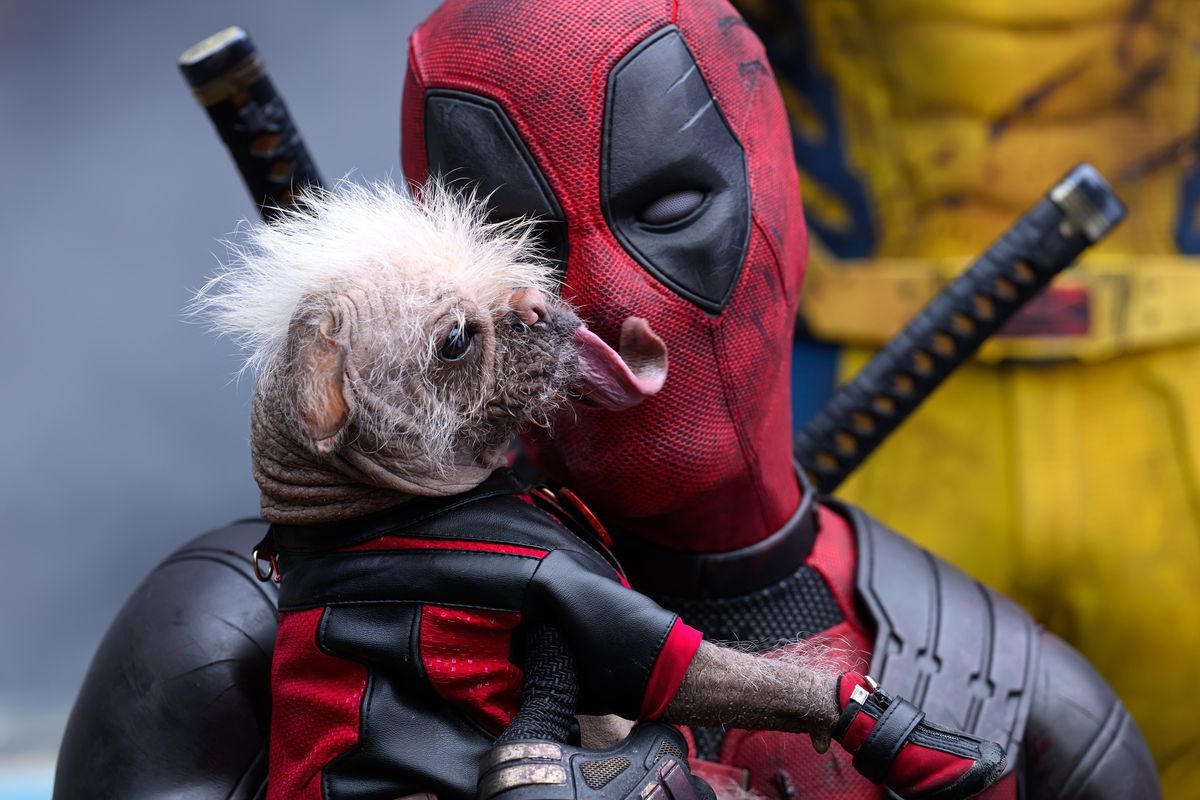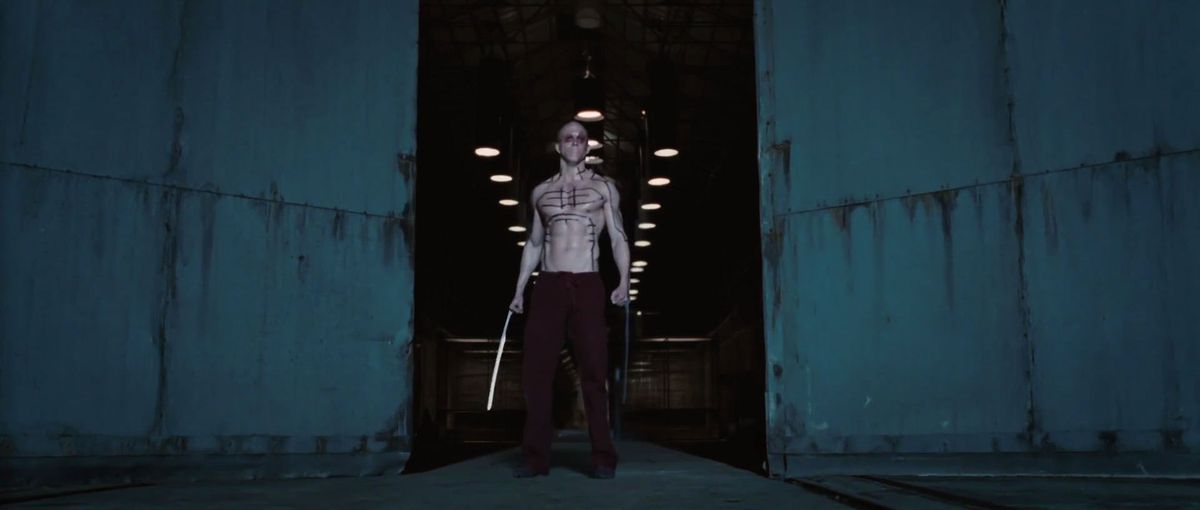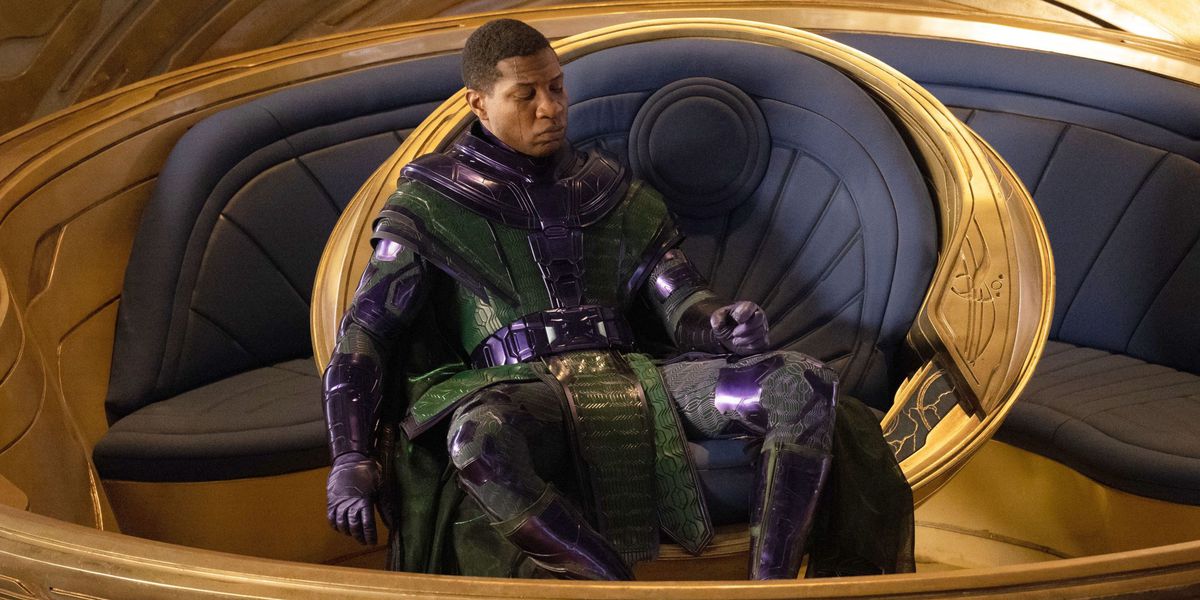They called the movie Deadpool & Wolverine, but maybe the title should have been Deadpool & Wolverine & Everybody Else, given how many character and actor cameos were in it (if you’re reading this, that means you’re following Deadpool & Wolverine news, so you almost certainly already know that).
But underneath all the goofs and gore and the cameos (and the goofs about the cameos, and the gore in the goofs, and the cameos with gore), Deadpool & Wolverine is saying something about interconnected cinema. In making a movie about Deadpool trying to become part of the Marvel Cinematic Multiverse, whether they meant to or not, the folks behind Deadpool & Wolverine made a movie about the inherent flaw of Kang and the MCU’s multiversal ambitions.
[Ed. note: This piece contains really big spoilers for Deadpool & Wolverine.]

D&W parcels out its update on our first-billed hero in flashbacks. Sometime before the movie started, Wade Wilson became preoccupied with a need to prove he “mattered.” Maybe this came from his girlfriend, Vanessa (though she encourages him to move past the idea, so maybe not). Maybe the blame falls on Cassandra Nova, who manipulates at least part of Wade’s flashback. It’s not exactly clear, which is a theme!
Despite being Wade’s entire motivation, Deadpool & Wolverine doesn’t have much to say about what “mattering” means to Wade. After our respective screenings, my colleagues compared notes; had we missed a line, or misinterpreted something? As a long-time comics reader and a student of continuity, I felt like I had a good handle on the answer, and why it’s so lightly put: Wade can’t spell out why he cares about “mattering” so much because he’s the only character in the movie who knows he’s in a movie. For better or for worse, what Deadpool & Wolverine means by “mattering” is to “be part of the main, ongoing canon.”
Consider: What does Wade do to try to “matter?” He tries to join the Avengers in the main Marvel Universe. When that doesn’t work, he’s at a loss — until the TVA tells him about anchor beings. Without its anchor being a timeline withers away, and is eventually consigned to the dung heap of time, as a story that is no longer continued or retold. Look, anchor beings are just main characters, yeah? That’s what a main character is. The character for whom, when their arc is over, the story stops.
Deadpool is elated, assuming he’s the anchor being of his timeline. He matters! Except, no. Wolverine is the anchor being, and the Wolverine of Wade’s timeline is dead, putting said timeline in danger. This sets off the rest of the film’s questline: Wade searches through various comic book references and cameos for a new Wolverine, and eventually strands them both in the time dung heap. There, they meet a host of characters banished after their respective universes withered away — all of these toss-offs from 20th Century Fox’s Marvel franchises: the X-Men, Fantastic Four, Blade, and Daredevil movies.
This collection of adaptational misfit toys finds purpose in the promise of one more chance at doing cool superhero movie stuff before they consign themselves to decomposition by a giant smoke monster.
The story, for all its messiness, has clear metatextual parallels. We have a set of largely underappreciated characters (and actors) who want their moment in the MCU sun. And Deadpool & Wolverine is the capper on the 20th Century Fox Marvel movies that aims to provide it. The smoke monster is just the transfer of intellectual property licenses.

In the end, Deadpool’s ultimate reward is to become the anchor being for his specific setting; the new main character who rescues it from disintegration. He learns to find happiness in mattering to just his close friends, the secondary characters of the Deadpool film franchise. His friends are his universe, in a heartwarming figurative sense, but also in a literal metatextual sense, because as the narrator and focal character of the story, there is no “Deadpool movie setting” outside of people he knows personally. He learns to find happiness and satisfaction without being a part of the Marvel Cinematic Universe, and in only “mattering” — that is, “being canon” — to his home timeline.
That’s a happy story and a good lesson about treasuring your friends. It’s also a perfect illustration of why Marvel Cinematic Universe’s post-Endgame attempt to go all in on the Multiverse hasn’t yet and may never work: The MCU is too dependent on the promise that every part of it “matters.”
Since Nick Fury said the words “Avengers Initiative,” an interconnected canon has been a vital draw of the Marvel Cinematic Universe. Continuity is not the end-all-be-all of storytelling, but Marvel Studios has been spamming the “this matters because it’s connected to this” button over the last few years to intermittent results.
The real finale of WandaVision, the work that completed the Scarlet Witch’s descent into out-and-out supervillainy, was Doctor Strange and the Multiverse of Madness. That film promised dire consequences for Doctor Strange’s meddling in Dark Magic and then shunted those consequences to his next film.
And then there’s the veritable carousel of Kangs.
When you train your audience to invest in a story because it “matters”, introducing the idea of a multiverse is a very tricky thing. The concepts of a parallel universe or an alternate timeline are defined by the ways in which they don’t connect, and how what happens in them doesn’t affect the main setting. As complicated as it may have been to have three Spider-Mans in a single movie, Sony’s Spider-Man: No Way Home is very careful to make all those alternate heroes and villains ultimately serve the emotional development of the Peter Parker of the Marvel Cinematic Universe, not to have those alternate heroes and villains become vital MCU forces in and of themselves.
The fact that we understand Wade’s drive to “matter,” regardless of whether it’s an in-fiction meaning like “doing great things,” or a metafiction one like “being part of the movie franchise that’s actually going places,” shows how intuitive this is to the viewer. We know that unless this Deadpool makes it into the MCU, the Ryan Reynolds version of the character will no longer be seen in movies. We know that being a part of the main continuity matters.

So when Loki season 1 introduced Kang the Conqueror, killed him, and promised an even scarier Kang was on the way, that was pretty thrilling. When Ant-Man & The Wasp: Quantumania introduced a Kang the Conqueror from another timeline, killed him, and promised an even scarier Kang was on the way, that was kind of baffling. When Loki season 2 introduced a Kang the Conqueror from another timeline, killed him, and promised, yet again, that another Kang the Conqueror, one who’d be an Avengers Level threat in his own team-up movie, was in another castle — that’s The Boy Who Cried Canon. The only thing that surprises me about Marvel pivoting to Doctor Doom is that it took them this long. Marvel can’t make “connecting to the MCU” the end-all-be-all and then center a character like Kang, who is defined by a million disconnected timelines.
Deadpool & Wolverine billed itself as the movie where Deadpool comes to the MCU. In the end, he spent about 5 minutes of runtime in the Marvel Cinematic Universe, and the rest just making jokes about it. He ends the movie happy in the shuttered 20th Century Fox X-Men setting, and with a behind-the-scenes montage tribute.
That’s great for Wade. But what universe will the heroes of the MCU retire to, if the Marvel Multiverse keeps playing fast and loose with what matters?